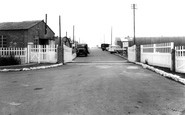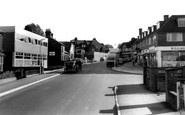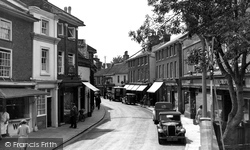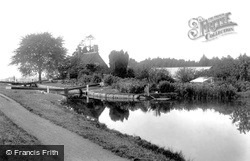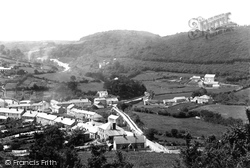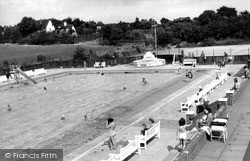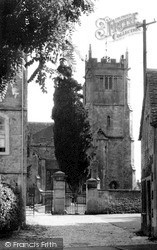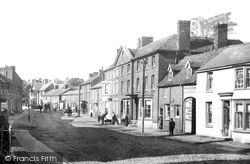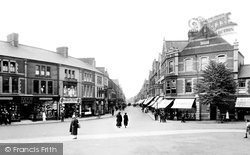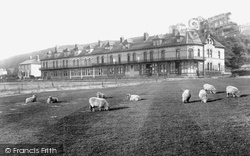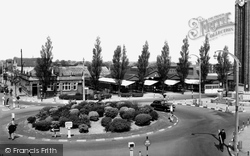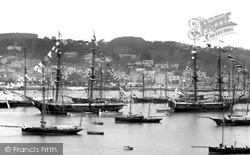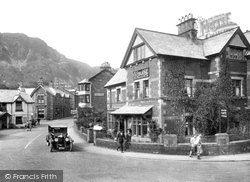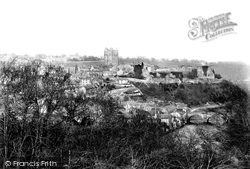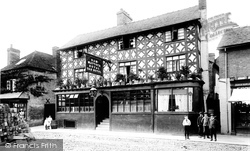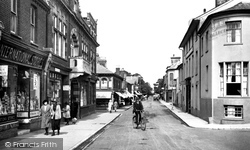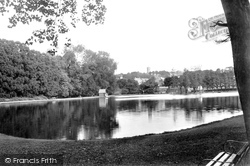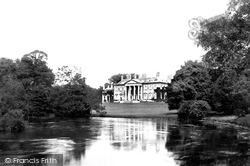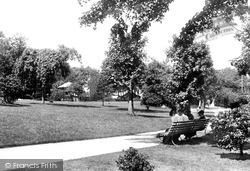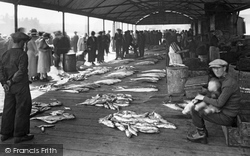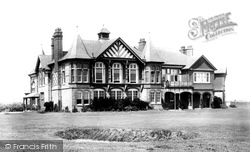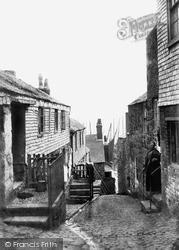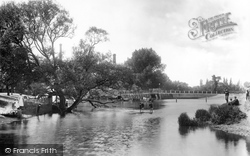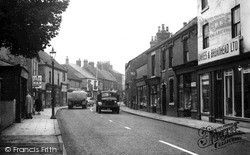Places
26 places found.
Those places high-lighted have photos. All locations may have maps, books and memories.
- Town End, Derbyshire
- Town End, Buckinghamshire
- Town's End, Somerset
- Towns End, Dorset
- Town End, Merseyside
- Town End, Cambridgeshire
- Town's End, Buckinghamshire
- West End Town, Northumberland
- Bolton Town End, Lancashire
- Kearby Town End, Yorkshire
- Town End, Cumbria (near Grange-Over-Sands)
- Town End, Cumbria (near Bowness-On-Windermere)
- Town End, Yorkshire (near Huddersfield)
- Town End, Yorkshire (near Wilberfoss)
- Town End, Cumbria (near Appleby-in-Westmorland)
- Town's End, Dorset (near Melbury Osmond)
- Town's End, Dorset (near Swanage)
- Town End, Cumbria (near Ambleside)
- Town End, Cumbria (near Lakeside)
- Town End, Cumbria (near Kirkby Lonsdale)
- Town End, Cumbria (near Ambleside)
- Town's End, Dorset (near Bere Regis)
- West-end Town, South Glamorgan
- Townend, Derbyshire
- Townend, Strathclyde (near Dumbarton)
- Townend, Staffordshire (near Stone)
Photos
26 photos found. Showing results 1,621 to 26.
Maps
195 maps found.
Books
160 books found. Showing results 1,945 to 1,968.
Memories
3,719 memories found. Showing results 811 to 820.
Growing Up In 50s Middleton
I loved growing up in Middleton in the 50s. Except for the smell from the Pixie Pickle factory - always hated vinegar!. Late afternoon April 30 1954. Passing through the town were endless 'charrers' full of blue and ...Read more
A memory of Middleton by
Crewe Town Hall, 1970s
I have a memory of visiting the Town Hall in the early 70s with my grandfather and being fascinated by a water feature in the foyer. It's no longer there and the staff don't seem to recall it at all. Have I imagined this or can anyone shed any light?
A memory of Crewe by
Moving From Plasterdown Camp To Catterick Camp
I remember being at Plasterdown Camp and Tavistock I loved the rural setting with Dartmouth on our doorstep. If you wanted to go into town then it was a trip to Plymouth I had a lot of good nights ...Read more
A memory of Tavistock by
Edmonton Green
I was born in Stanmore Rd n15 in 1953, but moved to Edmonton Green early 1954, so I was told. We lived above Gearys Bakery next to the Golden Lion, my dad worked in the bake house the other side of road.I knew all the stall holders and ...Read more
A memory of Edmonton by
Happy Days
We lived in Epping in the 60s and 70s best times of my life we lived in Nicholl road and went to school at Ivy Chimneys, great school and all the staff I can still remember nearly all my class mates where they lived all the little sweet shops ...Read more
A memory of Epping by
Hollies
I remember coming back from watching United in the semi final at Villa Park and we went to Brinny Sec to watch the Hollies in the school hall. We saw them many times after that at the Kingfisher and Stockport town hall.
A memory of Brinnington in 1963 by
St Paulinus School In The Late 40's
I have very fond memories of Crayford particularly going to St Paulinus School down Iron Mill Lane. I was just a little boy but my father's work took us all over England at the time, and unfortunately we only ...Read more
A memory of Crayford in 1949 by
Working In Burgess Hill
I worked in the ticket office at the railway station from about 1959 until about 1962. The taxi drivers would come in for tea and W.H.Smiths was attached to the building. I was one of the first to move in to the block ...Read more
A memory of Burgess Hill in 1959 by
Early '50s
Lived Wolverley - Just a few items on Kiddr from dim recall -town cinema - a screening of a western, Jeff Chandler as Indian warrior - Cochise? -a bigtop circus - Billy Smart or similar, at top of the big hill nr rly Station ...Read more
A memory of Kidderminster in 1952 by
Early 1960's
Lived at No7 Wolverhampton Road.. opposite Sammy Hall's butchers. Mum and Dad ran a shop out front and a car repair garage at the rear. No.1 was Coopers tailors... No.3 Baileys dry cleaners and No.5 I recall was owned by Mr & ...Read more
A memory of Heath Town by
Captions
5,111 captions found. Showing results 1,945 to 1,968.
In the mid 18th century, improvements in navigation on the River Blyth led to a big improvement in trade for the area's maltsters and brewers. The Thoroughfare is Halesworth's main shopping street.
From there, the Kennet & Avon Canal plunges down 29 locks to the valley below. This one is on the edge of town, close to the old prison.
St Blazey is a modest town that sits inland from the port of Par in St Austell Bay.
The pool is an obvious source of enjoyment and pleasure for the mothers and children of the New Town in this summer scene.
Pevsner writes: 'The church is out of the way to the west of the High Street, and what is attractive as a setting is around it and has little do with the town'.
This small market town on the banks of the Sow was entitled to hold four annual fairs, mainly for the buying and selling of horses and cattle.They were held on Midlent Thursday, Holy Thursday, 5
This view from the Square looks westwards towards Barry Town - unike today, there are no vehicles to be seen.
Among the many fine Victorian terraces in the town is one called Kipling Terrace, which was once the United Services College.
Almost out of shot on the right-hand side of the photograph is probably the best-quality structure in the town.
Queen Victoria much admired the town of Dartmouth and its beautiful estuary, recording in her journal that '...the place is lovely, with its wooded rocks and church and castle at the entrance.
The town centre of Coniston shows a quieter scene than today, with just one car on the road and a pair of ramblers (right) setting out purposefully for the hills.
Taken from Billy Banks Wood south of the Swale, this distant view shows the defensive site of Richmond Castle, and the town clinging precariously - and picturesquely - to the hillside
Tenbury received its first charter for a market and fair in 1249, but remained a fairly humble country town until 1839 when a medicinal spring was discovered, leading to the creation of a pump room and
A view of the High Street showing—on the left—the Town Hall of 1900, which housed Barclays Bank and the Post Office downstairs.
We are looking north-east up the valley to the town.
Situated to the south of the town, overlooking the Test, Broadlands is an imposing porticoed house remodelled in classical style by 'Capability' Brown and John Holland in the mid 18th century.
The Gardens at Dunoon offer a little peace and tranquillity, compared to the hustle and bustle of the town.
By the mid 18th century, the town was even involved in whaling; blubber warehouses were erected along the inner harbour.
St Anne's has been described as 'a town built on golf', and this is epitomised in this splendid building.
During the late seventeenth century Greenock's trade in herrings with France and the Baltic required a fleet of over 300 boats. The town motto was 'Let herring swim that trade maintain'.
Here we see a narrow cobbled way with granite and slate-hung fishermen's cottages in the Downalong part of town.
During the late 17th century, Greenock's herring trade with France and the Baltic required a fleet of more than 300 boats. The town motto was 'Let herring swim that trade maintain'.
This small and delightful riverside town has a bustling quayside with a mix of pleasure boats and commerce in the shape of boat builders and repairers.
Thorne was already a busy market town when the Stainforth & Keadby Canal opened in 1802.The canal provided a link between the navigable rivers Trent and Don, and with its opening Thorne went on to
Places (26)
Photos (26)
Memories (3719)
Books (160)
Maps (195)

